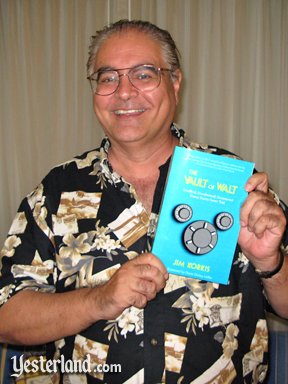
|
Is that Really Walt’s Airplane at Disney’s Hollywood Studios? |
||
|
|
|||
|
Two weeks ago, I discussed the Casablanca airplane at Disney’s Hollywood Studios with Jim Korkis. Today, our subject is another airplane at that park.
|
|||
|
The Claim: “An airplane on the Studio Backlot Tour is the actual plane that Walt Disney used to scout locations for what he called the Florida Project.” Status: True |
|||
|
|
|||
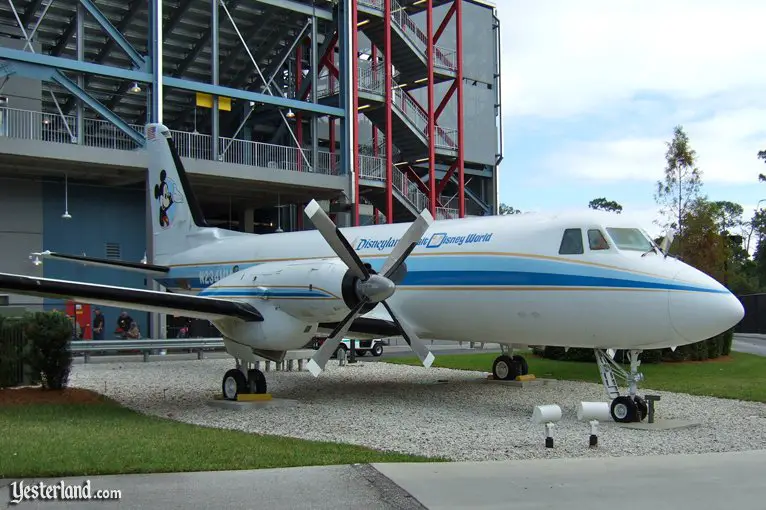
Grumman G-159 Gulfstream 1—The Mouse—behind Lights, Motors, Action! |
|||
|
If you’ve been on the Studio Backlot Tour at Disney’s Hollywood Studios, you’ve seen a twin-turboprop airplane with Mickey Mouse on its tail. It’s been part of the tram tour since 1993, originally parked in a green area behind the backlot’s Residential Street. It’s now parked behind the bleachers for Lights, Motors, Action! Since March 2009, the recorded narration on the tram has used these words to explain why the plane is part of the tour: On the right, we have an authentic piece of Disney history. That Gulfstream 1 was known in airports across the country as November Two Three Four Mickey Mouse. But we just call it The Mouse. In 1964, Walt Disney and his hand-picked team used this plane to scout locations for what he called the Florida Project. Soon, they secretly began purchasing thousands of acres of land, which became the Walt Disney World Resort in 1971. During the creation of the resort, and later Epcot, The Mouse shuttled studio executives and Imagineers between Burbank and Orlando making it the most-used executive aircraft in the country. Appropriately, The Mouse retired here in 1992. As Walt used to say, “It was all started by a mouse”—in this case, the Two Three Four Mickey Mouse. Is this narration accurate? |
|||
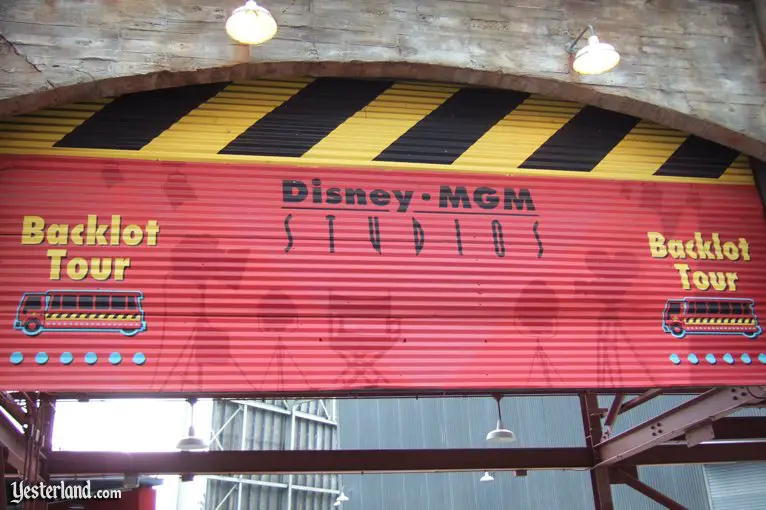
Studio Backlot Tour entrance sign |
|||
|
I discussed the subject with Disney history expert Jim Korkis, author of The Vault of Walt. Werner Weiss: So Jim, do you agree that the plane that’s now permanently parked along Studio Backlot Tour route is the real thing? Jim Korkis: It is indeed the real Disney “Mouse,” a plane that Walt Disney used—a Grumman G-159 Gulfstream 1, serial number 121. It ended its decades-long service in 1992. The interior has been gutted, so it is not likely that this flying Mouse will ever fly again. WW: So Walt Disney used this plane to decide on Central Florida as the site for what would become Walt Disney World? JK: No. That was a different plane. Walt’s first company plane was a Beechcraft Queen Air, a smaller twin-propeller plane that the company put into service in February 1963. Imagineer Bob Gurr engineered a folding jump seat in the Queen Air’s aisle for Walt. WW: When did Walt decide on Central Florida? Jim Korkis: It was November 22, 1963. Walt and his team flew over the coast so Walt could confirm his decision not to build the Florida Project by the ocean. Then they traveled inland to Orlando, circling over the forests and swamps. On their way back to Burbank, they stopped in New Orleans to refuel. That’s where they learned that President Kennedy had been assassinated that day. On the somber return flight to Burbank, Walt announced that Walt Disney Productions would look for land in Central Florida for the E.P.C.O.T. project. |
|||
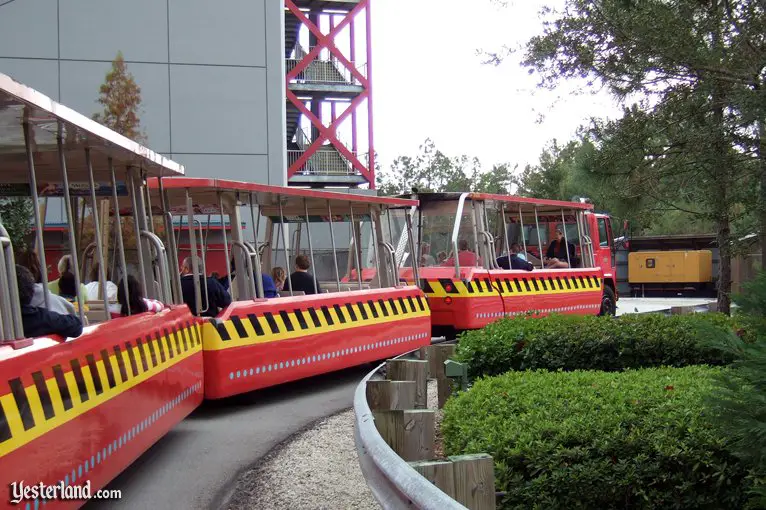
Trams behind Lights, Motors, Action! |
|||
|
WW: I thought you said that the plane on the tour is the real plane? JK: Yes, it is! It’s one of the planes. The Disney company put that Gulfstream 1 into service in spring of 1964. It was larger and faster than the Queen Air. Walt contributed to the plane’s interior design, and his wife Lillian assisted in selecting materials and colors. The plane came with a jump seat behind the cockpit and three instruments including an altimeter and air speed indicator in the cabin. Walt had a telephone directly to the pilot. WW: I’ve also read that Walt liked to use the co-pilot seat. JK: Yes, but the Disney corporation’s insurance brokers took a dim view of Walt sitting up there, especially since Walt always liked to fly as low as possible to study the landscape. Walt often took over the controls for short periods of time on long cross-country flights, and that irritated Lillian. WW: I guess Walt had a lot more scouting to do after deciding on Central Florida, and he needed a plane that could fly between California and Florida more quickly, and with more seats. Deciding on a region within Florida is one thing, but picking the actual site and initiating land purchases is another. So that seems to be what the tram narration refers to. JK: There was even a third plane. In summer 1964, they replaced the Queen Air with a turboprop Beechcraft King Air Model 90. Although similar in some ways to the Queen Air, it flew around 50% faster. But they didn’t keep that one very long, only until 1967. |
|||
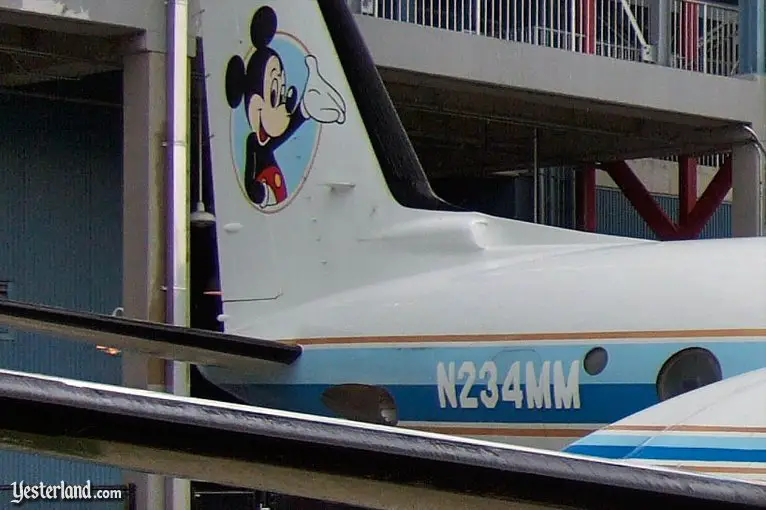
Tail number N234MM |
|||
|
WW: Let’s talk about the name “November Two Three Four Mickey Mouse” in the tram tour narration. JK: The tail number on the plane has been N234MM since 1967, but it was N732G back when Walt Disney used the plane. They called the plane “George” in those days. Originally, N234MM was the tail number for the Queen Air. Then they moved it to the King Air. Then, when they got rid of the King Air, they moved it to the Gulfstream 1 that you see on the tour. WW: So what about November and Mickey Mouse? JK: Tail numbers on U.S. aircraft start with the designator N, and November is the code for N in the F.A.A. phonetic alphabet. However, when pilots spell out the tail number in communications with Air Traffic Control, they only say the numbers and letters following the N. Bob Gurr described how the pilots would initially use the proper form, “two three four metro metro.” Then they would try “two three four Mickey Mouse.” It did not take long until F.A.A. controllers routinely called N234MM “Mickey Mouse.” WW: That’s how it became The Mouse? JK: Yes, it is! WW: I wonder if some guests on the tour think that the plane is called The Mouse because Mickey Mouse is painted on the tail. I think it’s safe to say there was no mouse on the tail when Walt was secretly surveying Central Florida. JK: The paint scheme that you see now is how the plane looked in its final years of operation. When the 1980s began, the plane had a wide orange stripe along the windows, a small orange circle with a Mickey Mouse head on the tail, and no company name or theme park name. At the time that Walt used the plane, it probably looked like any other plane, with no distinct Disney markings or artwork, but I haven’t found any photos of the plane from that time. As I mentioned earlier, that plane didn’t even have MM as part of the tail number when Walt used it. |
|||
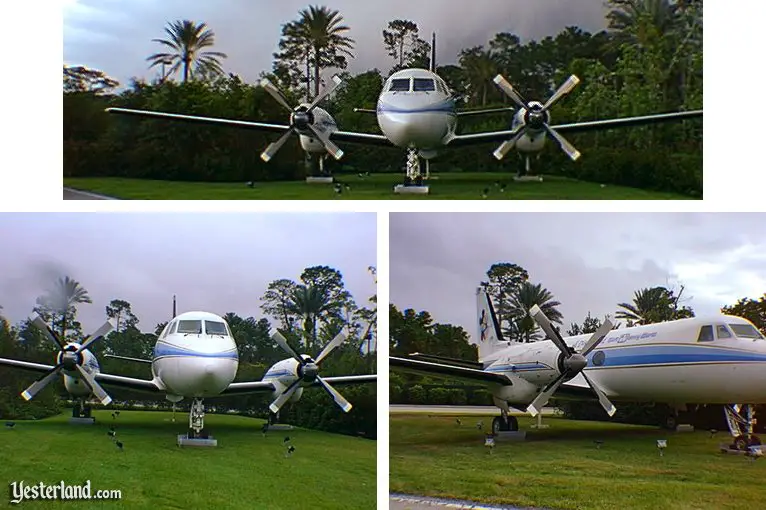
The Mouse in its old location on the tour (photos from 1996-1998) |
|||
|
WW: What about the part of narration that claims it was the most-used executive aircraft in the country? JK: It became the highest utilization Gulfstream in worldwide corporate service due to almost continuous flights ferrying Disney executives weekly to New York for the 1964-65 World’s Fair and Florida for Walt Disney World. WW: Was The Mouse only used for activities involving East Coast real estate and attractions? JK: Other parts of the company used it too. For example, in just eight days during the Fall of 1965, the Gulfstream logged 8,300 miles in 26 flying hours carrying actor Dean Jones, Disney exec Card Walker and others of the Disney sales operation to seven cities pitching the movie That Darn Cat. WW: Where did the company keep the plane? JK: The Disney aircraft were based at what’s now Bob Hope Airport—it was called Lockheed Air Terminal from 1940 to 1967—in Burbank at Pacific Airmotive Corporation’s facility. They were serviced by the mechanics there, with supervision from Disney maintenance chief Ed Henderson. Jim Stevenson as pilot and Frank Gamble as co-pilot would alternate trips with pilot Kelvin Bailey and co-pilot Jim Bissell. Disney’s original Queen Air pilot, Chuck Malone, also was a Gulfstream pilot. |
|||
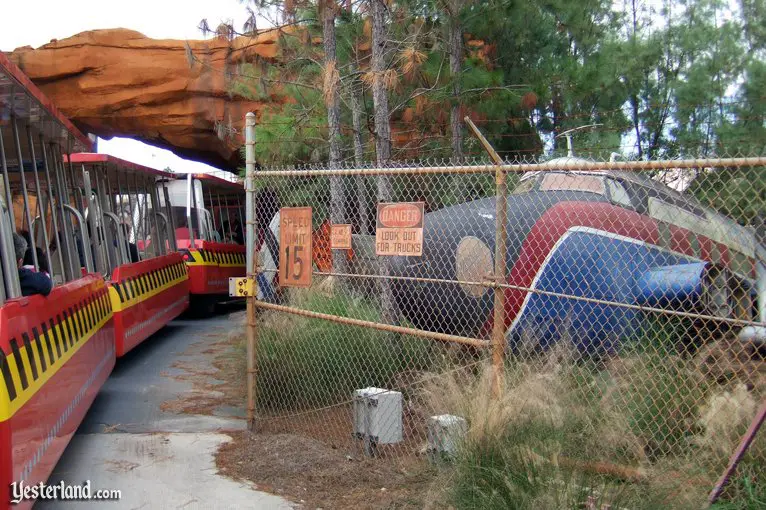
The remains of a movie prop airplane in the boneyard |
|||
|
WW: So The Mouse served the company from spring of 1964 until eight years after the arrival of Michael Eisner and Frank Wells in fall of 1984—essentially three decades. The book Disney War by James B. Stewart (Simon & Schuster, 2005) has a number of references to Eisner-era Disney executives on the corporate jet. But even after the top executives had graduated to a corporate jet, The Mouse apparently still shuttled Imagineers and others back and forth. JK: The Mouse was eventually retired because it might take seven hours to fly The Mouse to Florida, but in the late ’80s, it became possible to do it two hours faster in a commercial airliner. In addition, on return trips to California, there were often headwinds and the plane sometimes had to stop to refuel, even though it had long-range fuel capability for transcontinental travel. WW: By the way, I’m planning to publish this discussion on December 24. JK: Werner, I am sure your readers might wonder why you would run an article on Christmas Eve talking about Walt’s plane. I can suggest a good reason. It turns out that in 1965, one of Walt’s pilots was Kelvin Bailey, a reserve Marine officer who was putting in a lot of time and trouble gathering toys for the Toys for Tots campaign. After an accidental meeting in the Disney Studio hallway with Kelvin, Walt himself got so excited that he filmed a television spot for Toys for Tots. The following year, he did another, along with having the Studio create that famous image of Donald Duck in Santa’s hat and white beard driving a small Casey Jr. That artwork was used as a poster on the collection barrels for toys. Disney had been involved with the well-known Christmas charity since 1948, when his artists made a poster that served as the basis for the Toys for Tots logo they still use today. You know, Werner, I have always wondered if that toy train logo for Toys for Tots was inspired by the fact that Walt loved toy trains. He not only had an elaborate set for himself but offered to buy sets for all his younger male nephews. Anyway, it was the enthusiasm of Walt’s pilot that gave new momentum to Disney’s commitment to Toys for Tots. WW: Thank you Jim, and Fröhliche Weihnachten to you. JK: And a Merry Christmas to you as well, Werner, and all your readers. |
|||
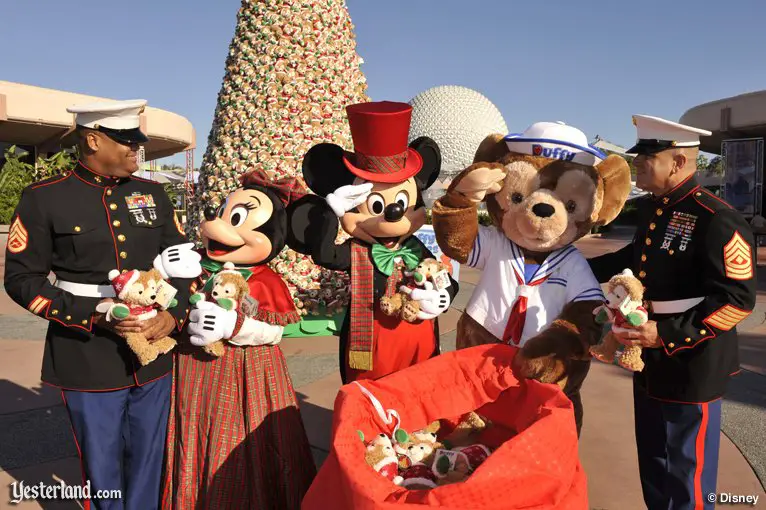
Disney’s 2010 Toys for Tots drive with “Cuddliest Christmas Tree,” featuring 1,200 stuffed “Duffy” Bears |
|||
|
The Walt Disney Company and Cast Members at the Disneyland Resort and the Walt Disney World Resort have never forgotten Walt Disney’s commitment to the U.S. Marine Corps Reserve Toys for Tots Program. More importantly, they have never forgotten the needy children who receive the toys. To learn more about Toys for Tots, and to see the logo that Walt Disney’s artists designed more than 60 years ago, visit ToysForTots.org. |
|||
|
|
|||
|
|||
|
You might be interested in these other Yesterland articles featuring discussions with Jim Korkis about Walt Disney World myths:
Jim Korkis is the author of The Vault of Walt (2010): |
|||
© 2010-2011 Werner Weiss — Disclaimers, Copyright, and Trademarks Updated November 4, 2011.
Photo of Grumman Gulfstream 1 on tour: 2006 by Allen Huffman. |
|||
